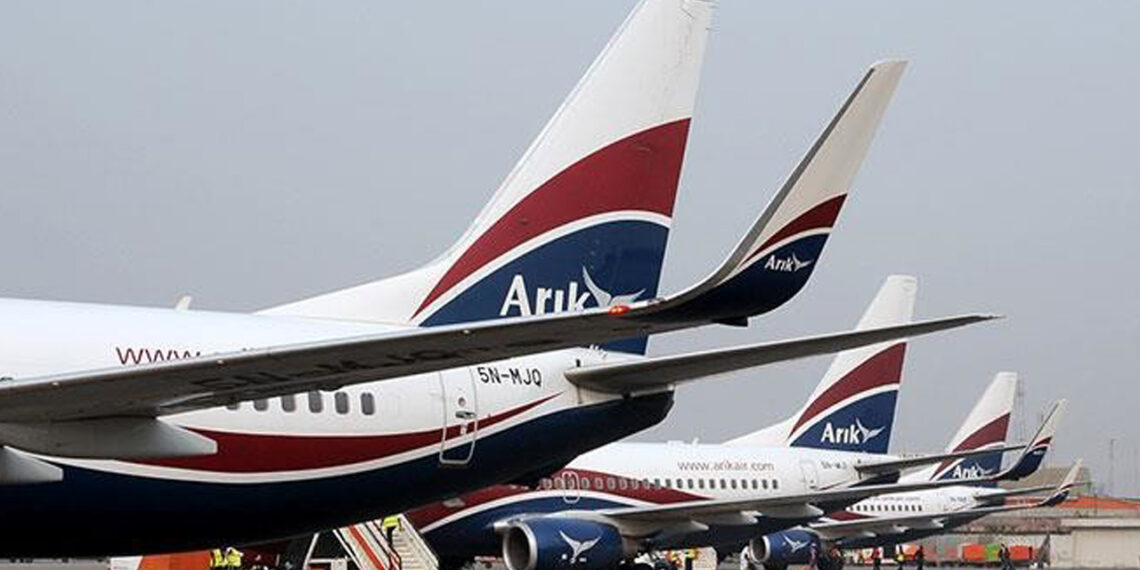The Asset Management Company of Nigeria (AMCON) has given more facts on the ownership tussle between the company and the founder of Arik Air, Joseph Arumemi-Ikhide.
This came even as AMCON explained the major reason it intervened in the airline’s N300 billion debt saga.
AMCON also denied reports of the airline having over 17 aircraft before it took over, stating that most of the aircraft were unserviceable.
It equally stated that its frustration in setting up NG Eagle led it to the sale of the last stages of its Air Operator Certificate (AOC), to an unnamed company set to commence operations in the country.
Arik Air was set up in 2004 from the ashes of Nigeria Airways, which was liquidated in 2002 by President Olusegun Obasanjo’s government.
In August 2006, the Federal Ministry of Aviation granted Arik Air authorisation to fly to Trinidad and Tobago as well as Amsterdam, London and Madrid in Europe.
However, while speaking during an interactive sessions with journalist in Lagos yesterday, AMCON’s Managing Director, Ahmed Kuru, noted that the asset management company does not take pride in taking over thriving businesses.
Kuru, who noted that AMCON got caught in the Arik Air saga and intervened to save the carrier, said:
“The Federal Government at that time wanted a situation whereby Arik should be saved because of the security report that they had that the airline stood no chance of survival for another two weeks in 2016.
“This call for intervention was initiated by former Vice-President, Prof. Yemi Osinbajo, when he acted as acting President in the absence of former President Muhammadu Buhari.
“The idea of Acting President, Prof. Yemi Osinbajo, was that Arik must be saved because of its prominence at that time. We made it clear that we didn’t know much about aviation.
“Capt. Roy Ilegbodu was headhunted. There was Capt Roy, then Capt. Ado Sanusi. These are some of the best guys in the industry. They said AMCON came to kill Arik when in actual fact, Arik would have long gone. But the fact that AMCON’s name was there, then, AMCON has killed it.”
The AMCON MD put the carrier’s indebtedness to the company alone at N240 billion, adding that the claim that the airline had 17 aircraft at the time the carrier was taken over was a big lie.
“When we got into Arik, there were about seven aircraft on the ground. It doesn’t mean the aircraft were okay but it was on the ground which means if you fix one or two things, they will fly.
”Based on the record we had, Arik was supposed to have more than 30 aircraft. Some of them had been vandalised and cannibalized. What they did was to take one engine and put in another aircraft, take the landing gear and fix in another.
“If you go to Arik hangar, you will see many aircraft parked. They look so innocent as if they can fly. Many of them have no engines, landing gears, and some other things. They have been cannibalised and even become a challenge. Some of the aircraft belong to some lenders.
“Even to the lenders, it became a challenge. Most of the aircraft belong to some lenders, such as AFRI-EXIM Bank, Access Bank, Zenith Bank, and one other bank from Canada. Some of them, when they tried to seize the aircraft, they realised that the engine belonged to a company and another part to another company,” he said.
Kuru noted that the case of Aero Contractors was worse before the assets recovery firm came in for rescue, describing what culminated in the near-death of the once flourishing carrier to a case of “when people decide to steal from themselves.”
He said: “AMCON can never be popular with the kind of job we do. We don’t go and close a running business. Some of those businesses were already dead. AMCON cannot see a thriving business and close it down. It does not happen like that.
“The founder of Arik Air, Sir Johnson Arumemi-Ikhide, had a good idea and wanted to have an international airline but got it all wrong with his choice of aircraft, some costing as high as $150 million, and overpaid for so many others.”
AMCON sold truncated stage five NG Eagle’s AOC
He stated further that the frustration encountered by the firm in setting up NG Eagle led it to sell the last stages of its AOC to an unnamed company which planned to begin air operations.
‘The NG project was truncated at stage five of the process of getting it’s AOC. The NG Eagle’s AOC processes are expected to expire next week and it is incumbent on the new owner to continue with the processes or allow it to expire.
“We started the process of setting up NG Eagle. It took us two years to follow the process. We went through the rigour of getting the license. At that point when we were about to pick up the license, some people came up that we were trying to set up a national carrier. We were frustrated.
“If you recall, there were three aircraft that were branded sitting on the tarmac and they sat on the tarmac for one and half years which was very strange.
“We went through the process all to the point that we were to pick our license. They thought we wanted to float a national carrier. Unfortunately, we were not encouraged and we were not able to deal with it up to the extent that we had to find a way of dealing with the license because it was expected to expire within some time.
“We started the process and we were able to sell the process to somebody who intends to do airline business if he meets the requirements of the NCAA before the license expires.”
[Vanguard]






